| Table of Contents [Show] |
|---|
Affiliate links may be used in this post. I may receive a small commission at no extra cost to you if you use my affiliate link.
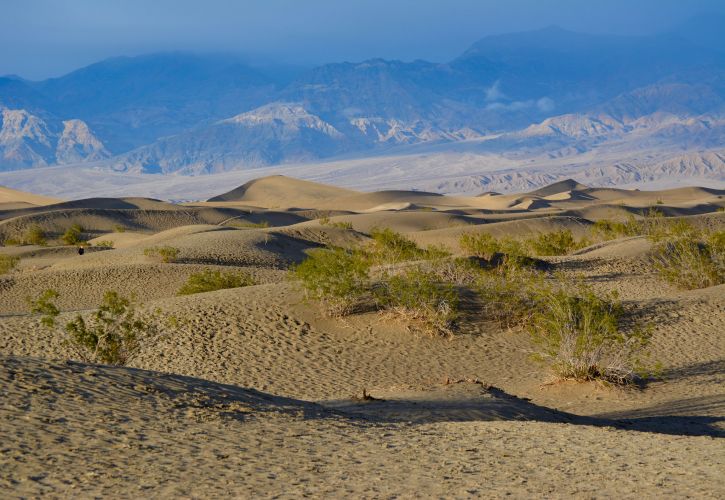
A trip to the sand dunes might feel like an otherworldly experience. The towering dunes cut through the open desert like something from a science fiction movie. The sand dunes might be the poster child of Death Valley, but they comprise less than one percent of the park.
The dunes are hard to access due to off-road vehicle restrictions. Fortunately, Mesquite Flat is easily accessible from a short hike. The sand dunes are remarkably diverse. They’re ever-changing and include crescent, linear, and star-shaped formations. Fearless travelers are known to sandboard the 100-foot dunes. But for others, wandering the vast terrain is thrilling in its own right.
Address: Death Valley, CA 92328
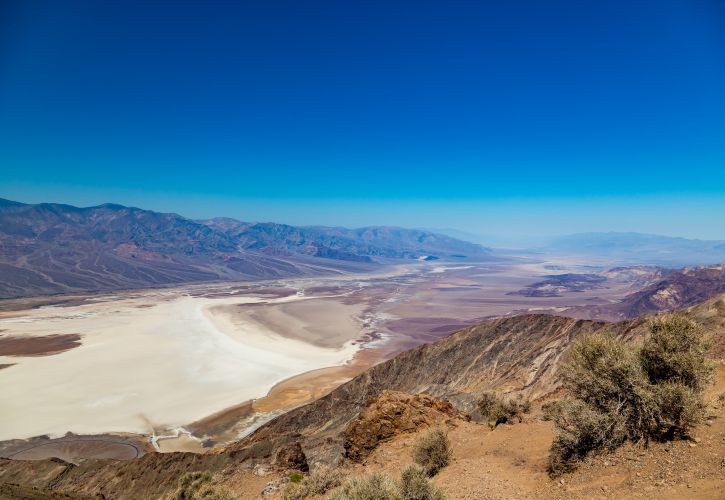
There’s no better place to photograph your trip than at Dante’s View. This overlook is located atop the Black Mountains at a height of nearly 5,550 feet. Once you reach the summit, you’ll be greeted by panoramic views of the southern half of Death Valley. Dante’s View’s elevation makes it the best spot to witness Death Valley’s unique terrain. You can spot many of the park’s signature landmarks, including mountains, sand dunes, and salt flats. Grab your camera and make a trip to this easily accessible spot.
Address: Dantes View Road, Death Valley National Park, Death Valley, CA 92328
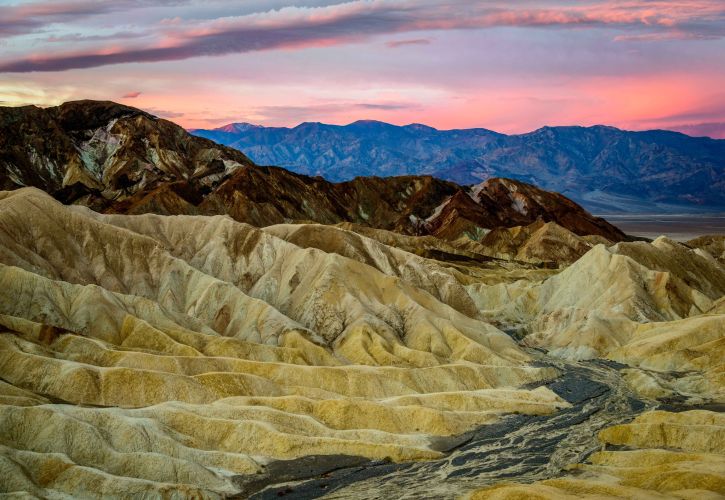
Many people frequent Zabriskie Point for its stellar views of Death Valley. But few know the history behind the scenic vista. Millions of years ago, Zabriskie Point was home to a flowing lake. Weathering and erosion from the lake created the yellow and brown colors seen on the badlands today. This lookout point is located on the outskirts of the Black Mountains. It has sprawling views of salt flats that are best enjoyed during sunrise or sunset when they showcase a remarkable range of colors.
Address: Zabriskie Point Road, Death Valley National Park, Death Valley, CA 92328
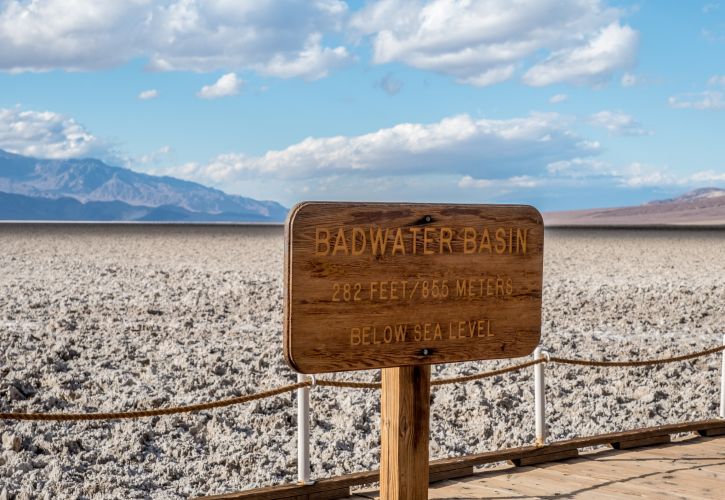
Badwater Basin is one of the most unique areas in Death Valley and the world. It’s notable for being home to the lowest point in North America, elevated at 282 feet below sea level. It’s also home to nearly 200 square miles of salt flats. The salt flats are fragile collections of sodium chloride that pool from rainwater and mineral collection. Walking along the salt flats is a surreal experience. It’s like walking a frozen lake in the middle of a hot and arid desert.
Address: Badwater Road, Death Valley National Park, Death Valley, CA 92328
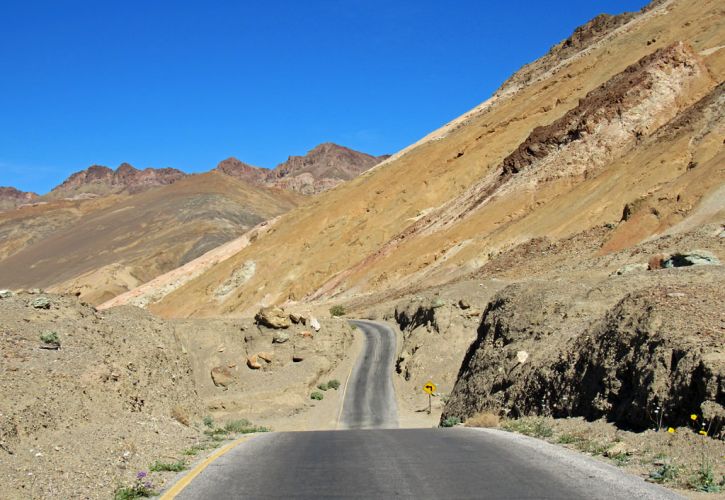
There’s no denying that Artist’s Palette is properly named. This landmark showcases a vibrant array of colors that stick out like a sore thumb in the middle of Death Valley. Access to Artist’s Palette requires a 9-mile one-way route called Artist’s Drive. The drive features fantastic views of Death Valley’s canyons and salt flats. Once you arrive at Artist’s Drive, you’ll be in awe of nature’s finest geological artwork. Artist’s Palette showcases a hue of teal, purple and blue colors formed through an oxidation of metals. You have to see it to believe it.
Address: Artists Dr, Furnace Creek, CA 92328
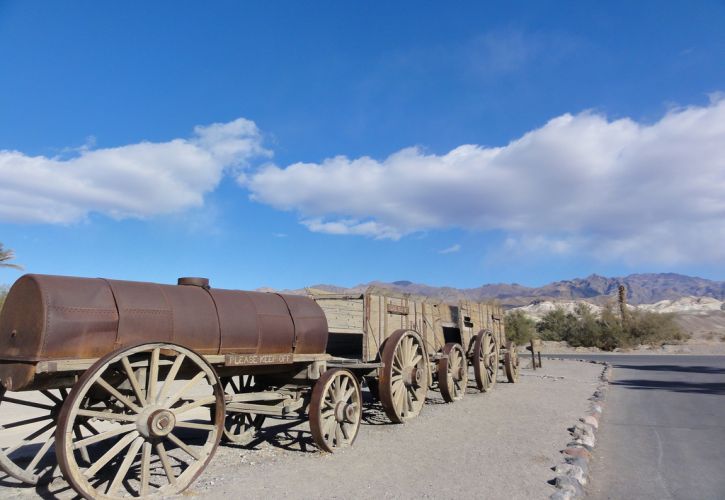
Furnace Creek has been a launching area for many Death Valley adventures. It’s an oasis in the heart of Death Valley’s desolate park. The small village has spring-fed resorts that offer refuge from the park’s harsh elements. Furnace Creek is located at 190 feet below sea level and is home to resorts and activities. You can enjoy golf, tennis, swimming and more modern amenities from inside one of nature’s greatest wonders.
Address: Highway 190, Death Valley National Park, CA 92328
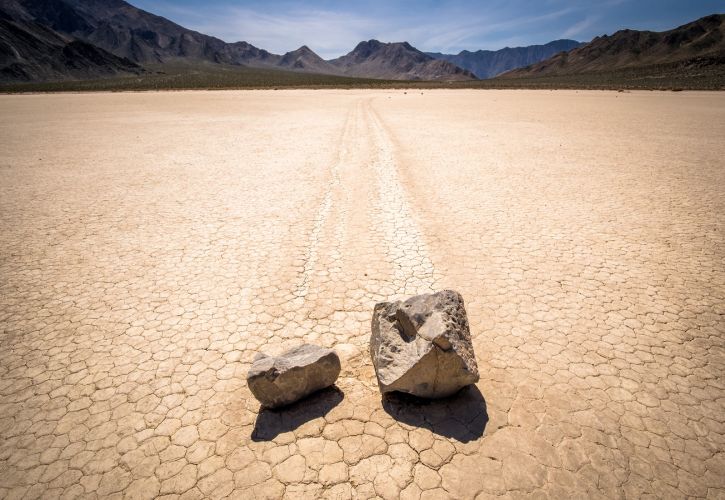
Mystery fans will love the Racetrack. It’s a playa located in a remote valley, also home to a strange natural phenomenon. Erosion has caused rocks to fall onto the surface of the Racetrack. The "sailing stones" are known to move across the surface and leave trails behind. The rock movements may seem like supernatural events, but scientists believe a rare combination of natural events causes them. Mystery or not, the Racetrack is a surreal destination.
Address: Racetrack Playa, Death Valley National Park, Death Valley, CA
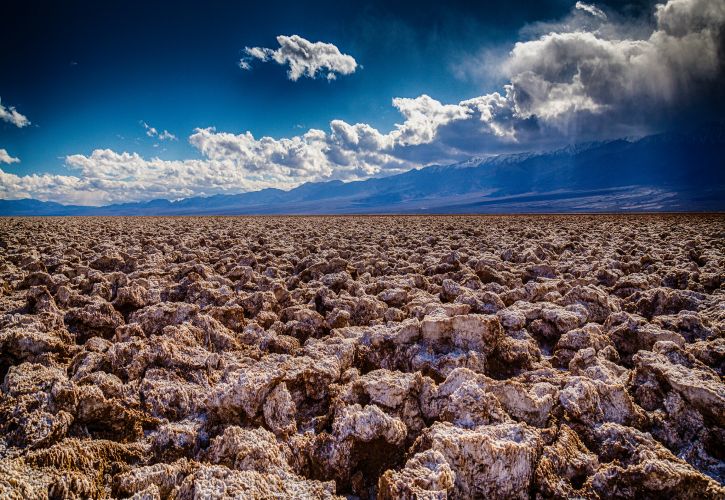
You won’t find any greens at Devil’s Golf Course. Instead, you’ll find a large saltpan filled with sculpted pinnacles. Devil’s Golf Course used to be home to Lake Manly. The lake dried up thousands of years ago, but not before leaving behind minerals. The minerals sculpted over time into a spectacular sea of rocks and salt crystals. The jagged salt crystals are an amazing display of the world’s complex systems.
Address: Devils Golf Course, California
Also Read: Best Golf Courses in The US
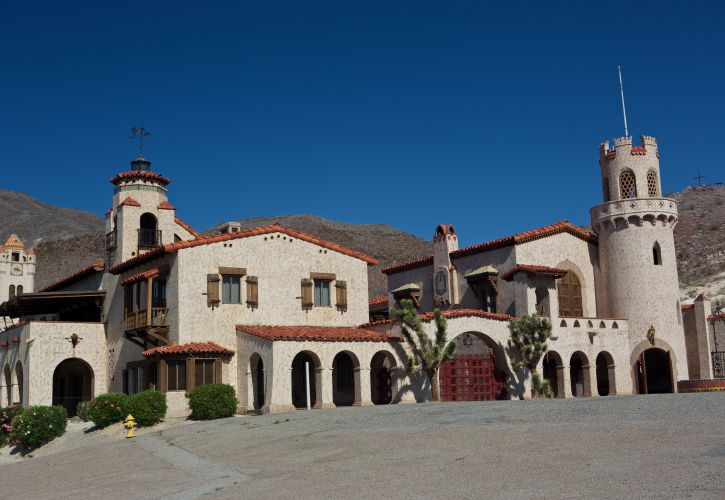
Scotty’s Castle is an architectural achievement hidden in the Grapevine Canyon of northern Death Valley. Its name derives from famed gold prospector Walter E. Scott, known as Death Valley Scotty. Though Scotty never owned the building, it remains a symbol of the mining era of the 20s and 30s. Scotty’s Castle is a two-story Spanish Colonial Revival villa filled with spectacular relics and antiques from a previous era. It may not be a natural landmark, but it still provides a look into an important time in Death Valley’s history.
Address: 123 Scottys Castle Road, Death Valley National Park, CA 92328
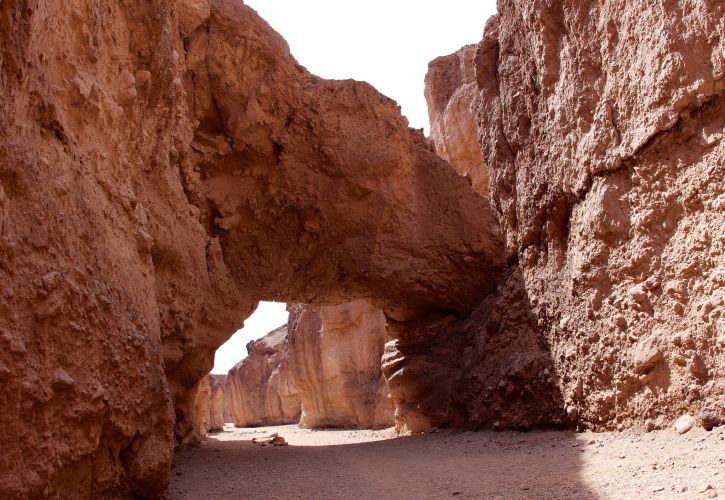
You can take a trip through time at Natural Bridge. This easy, 2-mile round trip hike showcases the unique geological history of Death Valley. The trail includes natural features like chutes and mud drippings en route to a 50-foot natural bridge. The bridge was created over thousands of years due to erosion, and today sits as an impressive representation of time. The trail also includes a dry waterfall and other unique geological features. This classic hiking trail is one of the more popular attractions in Death Valley and is fit for all ages.
Address: Natural Bridge Road, Death Valley National Park, CA 92328